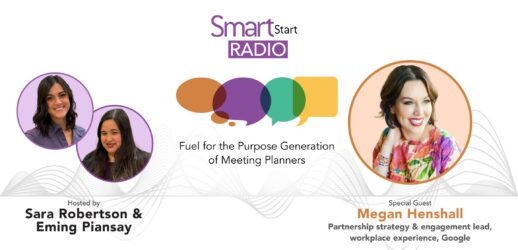The power of financial models over budgets
These are uncertain times. But then again, most times are. There is never a time when budgets aren’t on the line. Except perhaps maybe that one bright spot during the first dot-com era. I lived through that in the late ‘90s and there was no such thing as a budget. Money was spent like water. And then it all dried up, and we were back to where we started. Every budget needs justification, return on investment, all the things we know and love. So, what do we do in these times, which are more normal than not?
Everyone in the event industry knows their way around budgets. How to set them up, how to manage them, how to keep asking for that additional amount to the bottom line, or to validate the one you have. Sometimes, we are handed the goals along with the set budget, which can push us into mission-impossible mode—the conference version of being told to buy a Mercedes and being given only $10,000 to do it. What is a meeting professional to do?
Take the Wheel

A good financial model can put you in the driver’s seat. So, what is a financial model and how does it differ from a budget? It is, essentially, a projection into the future. Unlike a budget, which tracks statically, a financial model is meant to be dynamic. While a budget is handed to us, a financial model is suggested as a plan, something we think the business should do, not what they are already doing.
What does this look like in practice? We set up a budget for an event that could be done. And then we set up a way to show all the variations of that budget, using a key. So, if for instance, we are doing a single conference each fall, we may want to suggest doing another large event in the spring to keep the momentum going year-round. To do this, we would set up a budget for the fall event, and then create one for the spring event in the same spreadsheet. Easy enough. But then, we would also set up a few more criteria so that we can change these factors.
Start by creating a key, an anchored cell where we can change the data and see how that affects the other numbers in the model. One key could be a cell at the top of the spreadsheet for attendance, for the number of sponsors, for the VIPs or any other variable criteria.
Once we have the variable data in those cells, we link the data to any rows that depend on attendance. The final step is to start changing the numbers in that key by asking questions. Such as “What if we only have half the attendance in the spring?” or “What if we double the numbers in the fall by having a spring event?” or perhaps “What if we add another type of attendee in the spring event that we don’t have in the fall, and we get 200 of them?”
The model is made to answer these “what if” questions. The budget is given and is slowly drained away because it’s what we must do. The model allows us to live in the future and ask what we could do.
“A financial model allows us to live in the future and ask what we could do.”
The Fork in the Road
Now, let’s take it one step further. What if instead of just another event in the spring, we created an entirely new event based on what we knew the company needed?
We would start by putting together the expenses for what an event series might be. Who might attend, and how much do we think they might pay in their different categories? Maybe we would add exhibitors or sponsors, and maybe even a pre-event in certain cities. Then, to ratchet up the complication, we might even look at what the event series might be in the first year and take it all the way to three years later. What is that investment? And what amount of money could it make?
The ability to play out these scenarios quickly and with flexibility is dependent upon setting up keys for the variable data. It takes time to set up, but once it is ready, the world opens up with possibilities. Instead of being confined to the walls of a budget, we are free to propose ideas, concepts and events we know will work, and the business case behind them.
—
Heather Mason is CEO of Caspian Agency, a senior fellow and instructor at San Diego State University and Smart Woman in Meetings Hall of Fame winner.
This article appears in the December 2023 issue. You can subscribe to the magazine here.




